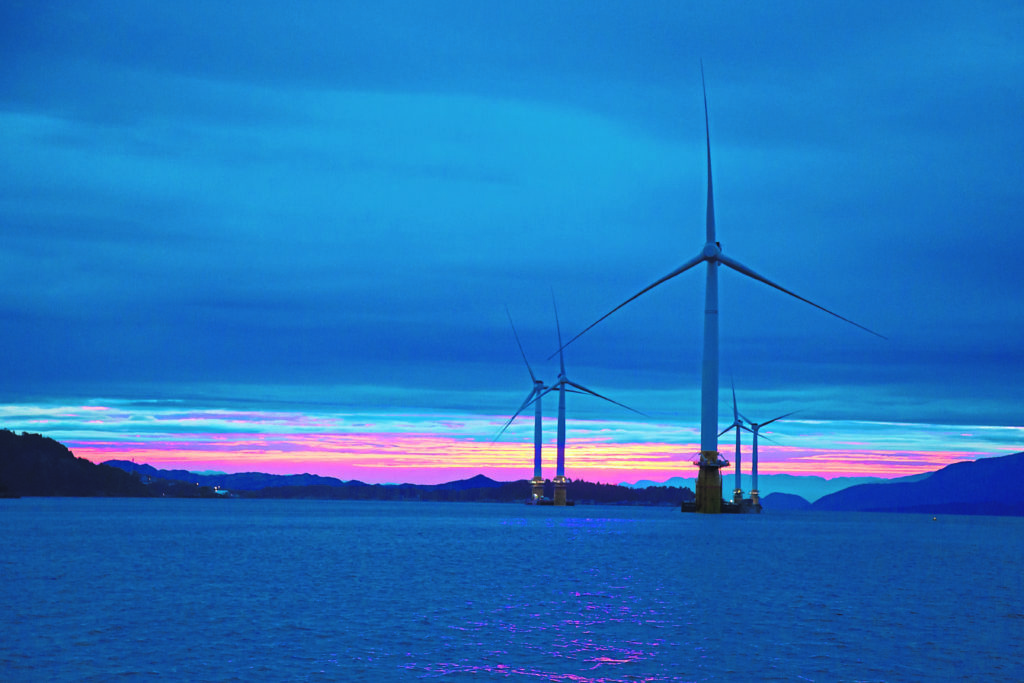
The energy landscape has changed fundamentally since the launch of the Bigger Faster Better series in 2022 with the invasion of Ukraine, which catapulted energy security to the forefront of thinking for companies and governments.
The drive for net zero continues to be the stated aim of governments, but proponents of decarbonisation face headwinds in the face of the drive for energy security.
For the UK, the recent announcements in the Spring Budget and the Energy Security Day constitute some positive steps towards the achievement of the net zero ambition. However, we need more clarity and support, regulatory and financial, to accelerate the transition of the country to a more sustainable climate friendly future.
Looking back over the last year there is a now a keen sense of urgency – driven in the main by the energy security narrative – on which the government has so far failed to capitalise.
Wind
Even before the invasion of Ukraine, offshore wind was front and centre in the UK’s plans for a shift to net zero. Now, in light of new concerns, this resource seems cheap, secure and clean as opposed to expensive, polluting and vulnerable to geopolitical and financial risks, fossil fuels.
Whilst the argument for offshore wind is clear, there remain some challenges. Grid capacity and connections are high on the list of concerns. Developers want to press ahead and get projects under way, however they are held back by uncertainty over grid connection dates.
While work to date has involved plenty of review, shifting that to concrete reforms needs to be brought in apace. Red tape on planning and delivering power to the grid remains a major headache for developers of these projects.
The Powering Up Britain plan, published in late March, signalled strong support for floating wind, saying this was the “next frontier”. But the implementation of the ambitious floating offshore wind projects in the Celtic and the North Sea, is jeopardised without the parallel development of the enabling port infrastructure.
This frustration has been echoed in the second report of the Welsh affairs Committee on Floating Offshore Wind in Wales and the report of the Floating Offshore Wind Taskforce. Both reports urge for immediate and adequate investment to upgrade and expand port facilities.
The allocation of £160 million of funding for port infrastructure announced in Powering Up Britain is a good start but just a fraction of the billions needed. Yet support for onshore wind remains paper thin.
Heat networks
The success of the electrification of heat will be dependent on both increasing the amount of low carbon electricity and reinforcing the grid. Where individual heat pumps are unfeasible, heat networks will have a key part to play.
The Energy Bill 2022 includes the introduction heat network zoning in England. Zones act as designated areas where heat networks are the lowest cost choice for decarbonisation.
Within these zones certain building types (such as new houses and public sector facilities) and certain heat sources will be required to connect to the network. This will therefore be transformative for the sector as it will result in networks growing much more quickly, reduce demand risk and increase investment in the sector.
The government has said it hopes to begin construction on the first zones in 2025.
Hydrogen
Hydrogen as a resource will play an important role in the UK’s future energy mix. Governmental support has been clear for the feedstock since its inclusion as a priority in the Ten Point Plan of 2020.
In December 2022, the UK published the latest draft of a business model for low carbon hydrogen – essentially setting out how the government would provide revenue support – with a full draft expected in May this year.
Furthermore, the government is coming through with funding; the £240mn Net Zero Hydrogen Fund and Electrolytic Hydrogen Allocation Round saw progress in early 2023.
Scotland also set out its hydrogen action plan, at the end of 2022, stating that the resource would “play an extremely important part” in the future energy system. Scotland drew a clear line from its offshore wind plans and green hydrogen – potentially finding a way through the criticism of intermittency that has long hounded renewable energy.
CCUS and clusters
UK government support for CCUS is clear, although there have been some challenges in execution.
The UK government named the first two clusters – HyNet North West and East Coast – in October 2021. Negotiations are progressing with projects slated to connect into those clusters. The UK government recently announced that it will be launching later in the year the competition for the next two clusters – describing both the Scottish Acorn project and the Viking CCS project as eligible.
The plan is to have the two named clusters of Track 1 up and running by 2025.
The future
The UK, it seems, still has some way to go before achieving the dream of being bigger, faster and better than the global competition – but it is a marathon, rather than a sprint.
The Spring budget missed out the need to invest in enabling infrastructure to reach the UK’s renewables targets.
With the government’s announcement of the re-classification of nuclear energy as sustainable, on an equal foot with renewables, it shows a government that isn’t short of ideas behind the energy transition, but the sector needs more clarity and more infrastructure to deliver on these ambitions.
Recommended for you
